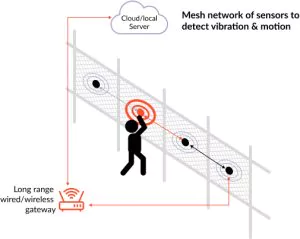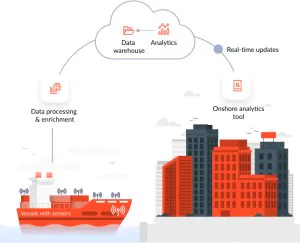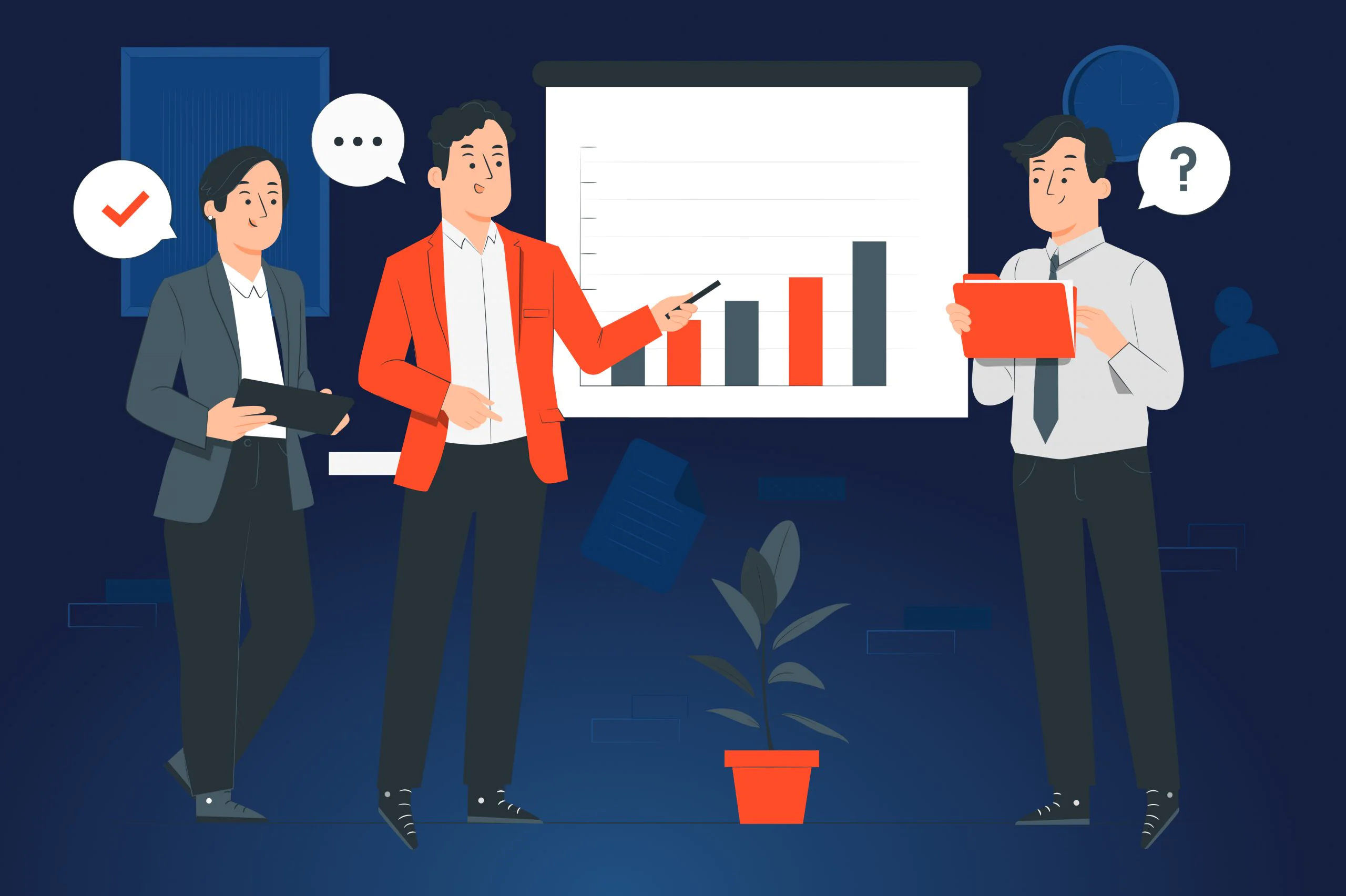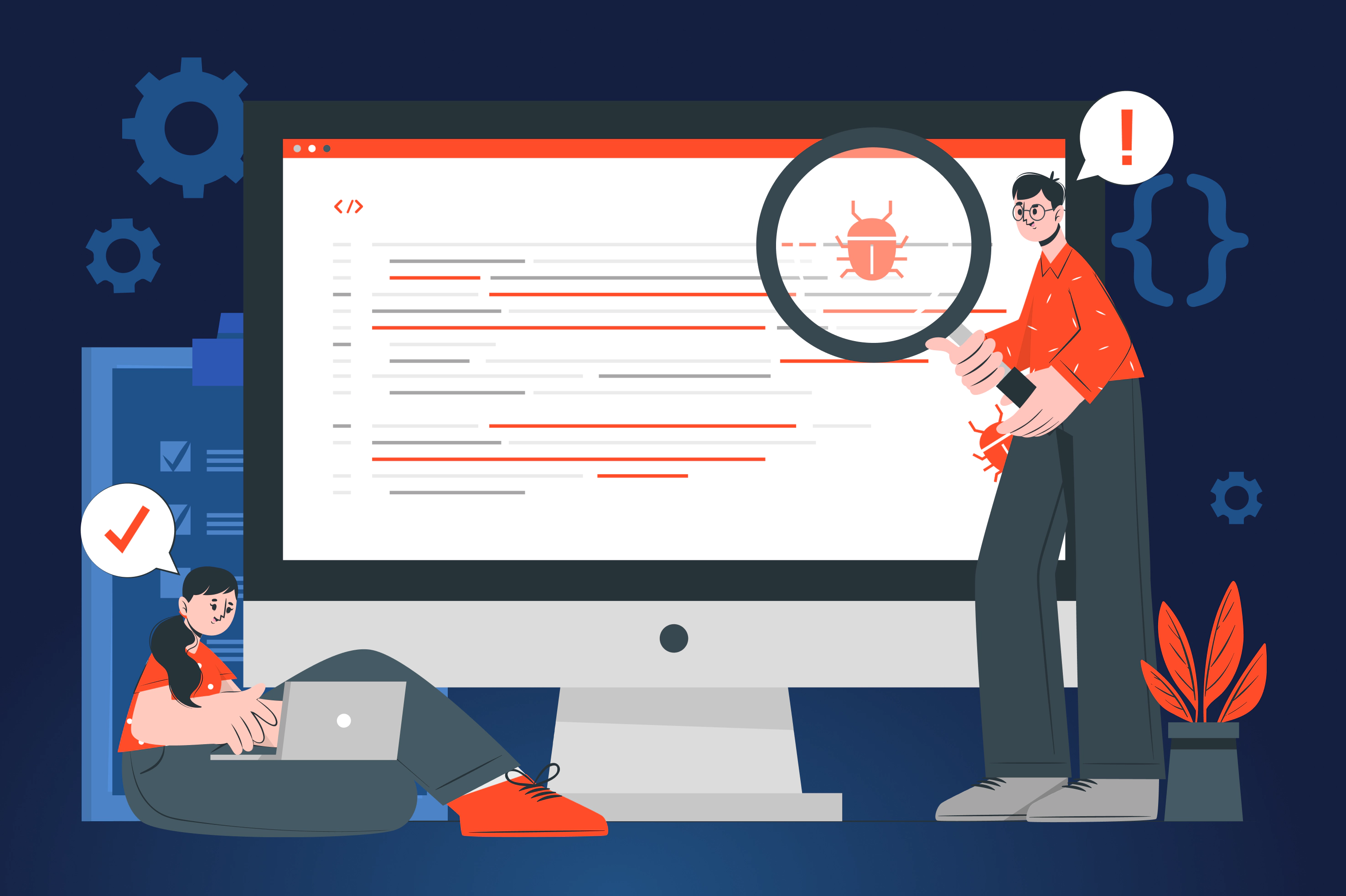The Internet of things (IoT) is already redefining the entire value chain. Sean Porter, Head of Digital and Systems at the world’s leading ferry network, DFDS, admits: “The future belongs to those who think beyond the confines of today.” He is convinced that businesses should invest heavily in technology to stay afloat in the years to come. Those companies that haven’t realized the power of IoT in logistics and transportation and fear to embrace cross-sector cooperation are risking to lag behind with the high chances to never fully recover.
The JatApp team would like to share its experience in IoT logistics solutions for you to make a more informed decision when building a product for the transportation and logistics industry. In this article, we’ll outline major problems in the sector that IoT successfully addresses, focus on common use cases, and highlight key benefits that this technology can bring to your business.
Problems in logistics that can be solved with IoT
IoT plays an extremely important role in helping logistics businesses overcome the following challenges: the lack of a sustainable supply chain and fragmented cross-sector cooperation.
The lack of sustainability in supply chain
By making transportation smarter, businesses can cut down their CO₂ emissions, thereby minimizing the environmental footprint. Even though for now there is no magic solution to stop climate change, IoT can make logistics more nature-friendly thanks to data analysis, automation and better transparency.
Data analysis enables companies to foresee vehicle movement and cut down the number of empty cars on the road. This not only helps businesses to save their financial resources, but to also reduce their carbon footprint. Automation, in its turn, is the future of the logistics sector. It paves a way to a more sustainable supply chain by reducing the amount of resources spent on transportation processes.
Last but not the least, the IoT technology brings transparency to the supply chain, reducing the likelihood of cargo loss and minimizing waste. This is particularly important for the perishable goods industry, such as fruits and vegetables transportation, which heavily depends on enhanced monitoring.
Fragmented communication between sectors
Cross-sector ecosystems can benefit literally all stakeholders involved in the transportation and logistics industry. While the thought of being able to easily share real-time data between industries may sound unrealistic, IoT solutions are already contributing to improved cooperation between different companies, increasing efficiency throughout the supply chain.
Cross-sector communication enables the logistics industry to pool non-sensitive data, which not only increases the speed to market, but also helps to save up on administrative costs. Data pooling could help to boost one of the IoT implementations, such as predictive monitoring. As a rule of thumb, the larger the data sets, the more accurate patterns will be generated. As a result, businesses would be able to take advantage of standardization across industries and higher operational efficiency.
Common IoT use cases in logistics
Inventory tracking
IoT-based inventory management tools allow logistics managers to effectively plan distributions and re-stocking. Connected sensors help to make sure that the storage of goods aligns with all respective standards, save time by enabling to quickly find a necessary item, and decrease the chances of human error.
Amazon’s connected system makes a great example of how IoT can be used to manage warehouses. Its solution is pure genius in its astonishing simplicity. The goods are stored on the shelves without any order. So, don’t be surprised to find a bottle of olive oil next to the New York Times best-selling book. Since employees scan all items, Amazon’s computers know where all products are located and can show the quickest route to them. Logistics managers use an IoT-powered handheld device to find, say, an ice-cream, and deliver to the customers’ door before it melts.
Amazon’s inventory tracking device
Vehicle tracking
With IoT, logistics companies can see the location of each vehicle, predict the time necessary for transportation, and check on delivery statuses. Such tools help companies to automate vehicle tracking, reduce traffic-related time losses, make sure that vendors adhere to the obligations mentioned in their contracts, and, more importantly, improve vehicle management due to IoT parking solutions and fleet tracking.
The vehicle tracking technology unlocks a higher level of transparency on how company vehicles are being used by employees, without disturbing them with constant phone calls. Such systems not only improve productivity but also prevent misuse of organizational resources.
RAM Tracking refers to the innovative vehicle tracking company that relies on the global positioning satellite (GPS) technology to communicate geolocation data from a vehicle to a web and mobile application. Its lightweight devices don’t take much space and can be fitted into vans, trucks, and cars. Moreover, they are usually installed in a discreet place, so that in most cases it’s difficult to tell that a vehicle is under monitoring.
RAM tracking solution
Self-driving vehicles
A self-driving car is one of the major breakthroughs in the smart logistics industry. IoT-based vehicles allow businesses to better manage the delivery process as well as minimize the effects of human error. Connected vehicles assist in selecting the most optimal routes and align temperature and other indicators inside the vehicle to ensure that products are stored in favorable conditions. Moreover, such vehicles let logistics companies collect data that help to streamline delivery processes and route management.
Self-driving vehicles from DHL, the world’s market leader, are known for their ability to cut down operational costs and delivery time. The company prides itself on their driverless vehicles that deliver butter from California to Pennsylvania in three days, even in snowy and rainy weather. Meanwhile, a similar trip with a driver would take nine days on average. It’s also worth noting that more tests, innovations, and standardized rules are necessary to make sure that companies can fully rely on this method of transportation.
DHL self-driving truck
Drone-based delivery
In the transport and logistics industry, drones are used to automate the delivery process, address last-mile problems, and improve warehouse management. Imagine that drones are more commonplace in retail. Businesses could significantly cut down the number of employees necessary to ensure client satisfaction, as well as reduce operational costs.
Wing makes a good example of a drone-based delivery company. The organization delivers wellness goods from Walgreens and FedEx packages to the customers’ doorsteps. Its drones are able to pick up packages that weigh no more than three pounds. What’s more, the company stands out from other competitors with its fuel efficiency. Its drones are powered by electricity, supporting our more sustainable future.
Wing’s drone-based delivery
Benefits of IoT in logistics and transportation
Traditionally, there are many factors that impact transportation and logistics operations, ranging from weather conditions to a large number of assets under control. The IoT technology has become a game changer, giving businesses an ability to either avoid or minimize potential risks. Let’s have a look at the key benefits of application of IoT in logistics and transportation.
Reduced shipping costs
Companies can reduce their operational costs and the number of staff members thanks to automated status updates and order processing. Some businesses actively use connected bots to reduce costs associated with last-mile delivery. Amazon has been taking advantage of drop-shipping lockers and autonomous bots for many years now, considerably reducing the employee-related expenses.
Amazon’s innovative delivery system
Employee safety and monitoring
IoT-driven devices in logistics help companies to track the employees’ health and identify potential hazards. For example, there are sensor-based tools that allow to protect staff members from exposure to toxic chemicals, as well as monitoring solutions that notify a driver, if they are not following safety standards.
Benefits of IoT related to employee safety
Some IoT solutions let business managers track personnel’s work routine and assess their performance based on the gathered information. The following insights allow them to get a comprehensive view of employees’ efficiency, identify planning or time management issues, and improve the logistics processes. Based on this data, managers can also offer incentives to employees to reward them for flawless performance.
Product safety
Connected hardware empowers logistics businesses to prevent thefts by detecting any intrusions. Sensor-based devices help to track assets in real time, while smart fences and alarm systems assist in managing facilities. In such a way, IoT applications increase visibility of the supply chain, while ensuring high levels of protection from robberies.
Smart fencing
Effective supply chain management
IoT devices offer companies various insights, such as how to streamline deliveries, which warehouses have higher conversions, how much time is needed to sell a certain amount of goods in the inventory, what vendors have better performance, and so on. As a consequence, organizations can conduct business operations and foresee the outcomes of their decisions more effectively.
An example of supply chain management with IoT
The future of logistics is IoT
IoT is becoming wildly popular in the shipping and logistics industry for several reasons. Connected devices cut down operational costs, ensure product safety, track employees’ performance, and facilitate supply chain management. The use of the technology assists in linking different sectors, which results in better cooperation between companies and increased overall productivity. On a global scale, IoT solutions help to fight climate change and minimize negative environmental impact of the logistics and transportation industry, while also supporting businesses in embracing corporate social responsibility.
Whether it’s vehicle tracking or drone-based delivery, JatApp is here to help you build a white-label IoT solution for logistics that would exceed your end users’ expectations. Our company has been specializing in software development for seven consecutive years. During this time we’ve built many applications for IoT devices, like a power bank rental platform and a software solution for electric vehicle charging stations, making sure that software and hardware communicate with each other without any disruptions. Many of our IoT-enabled solutions have thousands of active users and are employed by dozens of companies.
If you want to build an IoT solution for logistics and transportation, please, drop us a line and we’ll contact you as soon as possible.











